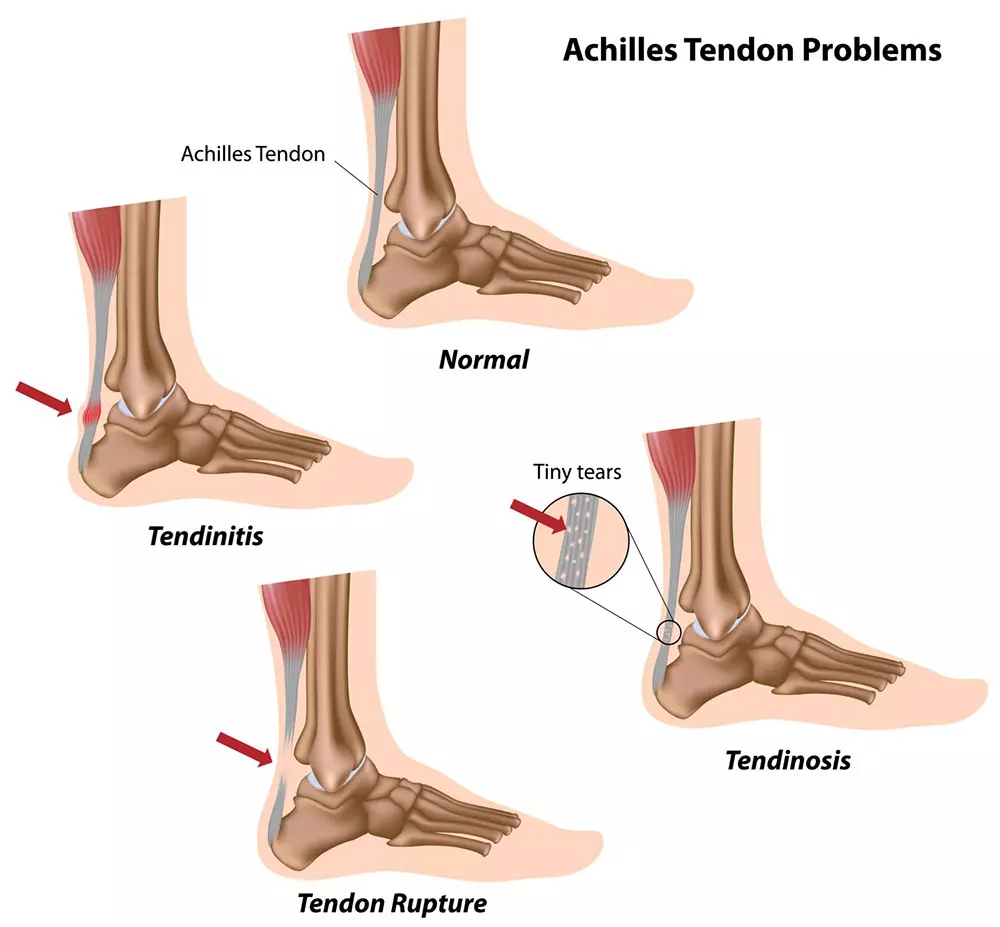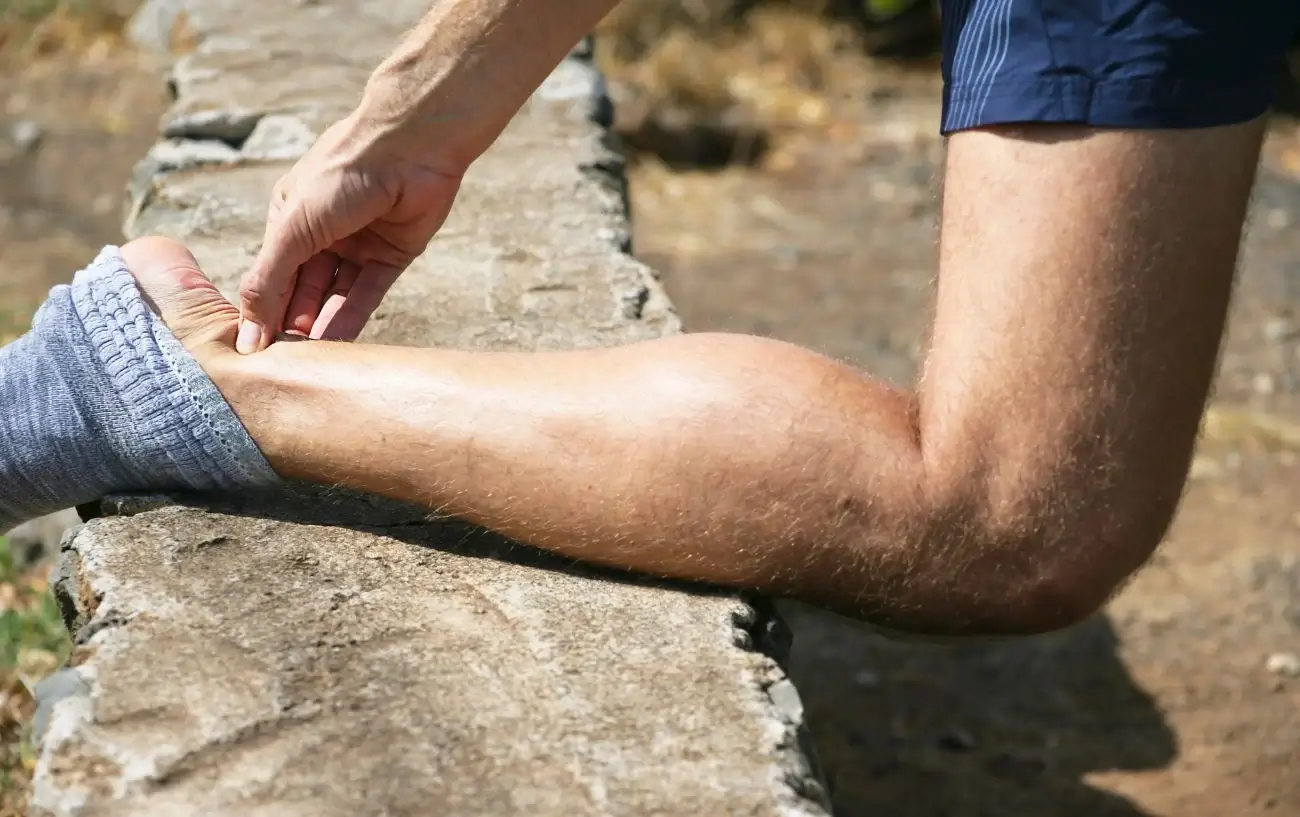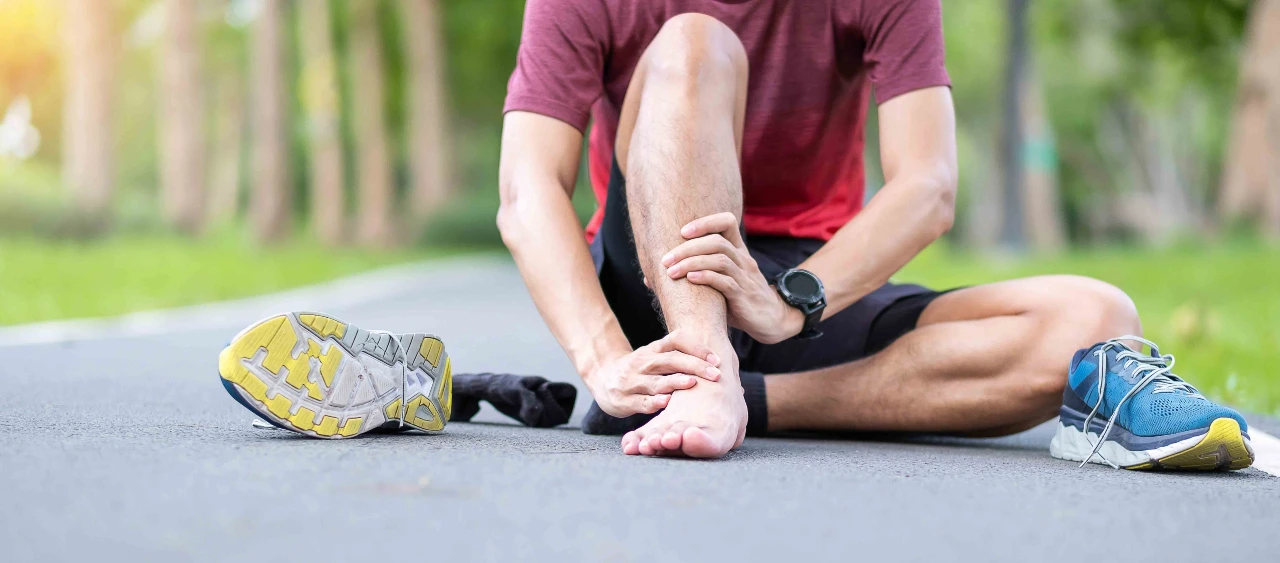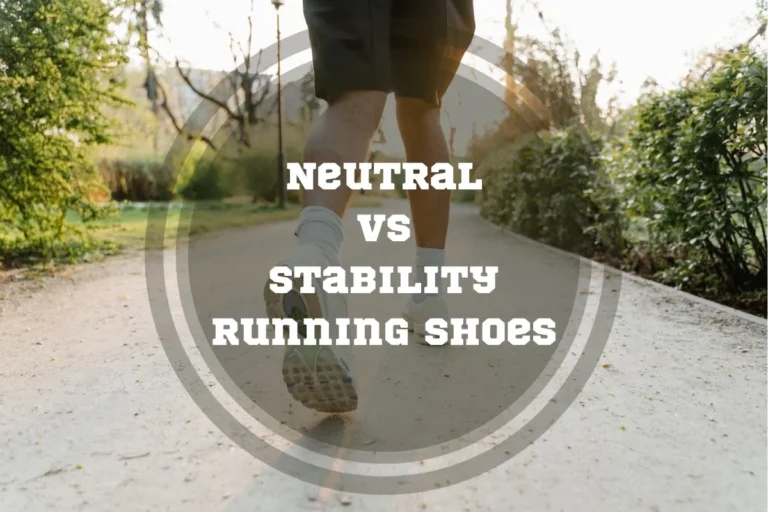Running with Achilles Tendonitis: 6 Tips to Prevent Pain
Are you experiencing discomfort in the back of your leg or heel while running? If so, chances are you are experiencing running with Achilles tendonitis. Injury or strain of the Achilles tendon can interfere with normal daily activities and even prevent some physical activity like running.
In this blog post, we’ll discuss what causes Achilles tendonitis to develop during running, how to treat it, and provide safety guidelines to help reduce the risk of injury. Stop asking, “Why does my Achilles hurt when I run?” Deal with the pain and have a comfortable run!
Treatment includes rest, icing, and doing exercises designed to strengthen and stretch the affected area. Non-treated symptoms such as persistent, localized pain and stiffness can worsen, causing potential damage like tearing or even a full rupture.
What Is the Achilles Tendon and Tendinopathy in Runners?
The Achilles tendon is the largest and strongest tendon in the body, located at the back of the ankle, connecting your calf muscles to your heel bone, and aids with running and jumping activities. It provides stability when walking, running, or changing direction and helps generate power that propels us forward.
Tendinopathy is a pathological condition caused by repetitive microtrauma to the Achilles tendon, resulting in pain and tenderness when doing activities such as running. Tendon pathology normally manifests as inflammation (tendonitis) or as a degenerative process (tendinosis). Common symptoms of Achilles tendinopathies include persistent, localized pain and discomfort along with stiffness of the ankle when resting or following activity.
Pain in the Achilles tendon when running can be caused by various factors, such as overtraining, increasing the speed or distance you run too rapidly, calf muscle tightness, being overweight, and static foot posture. However, it is not affected by the level of physical activity.

Here are the three main stages of tendinopathy:
Stage One: Reactive Tendon
In Achilles tendinopathy, there is often a failure of the tendon to heal fully after injury. This can result in a thickening or enlargement of the affected area in addition to pain and tenderness along its length. The most common causes are repetitive load and strain on the tendon over long periods and inadequate rest while recovering between activities such as running.
Symptoms may include intense localized pain (especially with movement), stiffness, swelling at certain points within the tendon, weakness throughout its length, and impaired muscle function, significantly affecting overall performance.
Stage Two: Tendon Dysrepair
Tendon dysrepair is a chronic degenerative condition seen in older runners and athletes who put excessive stress on their Achilles tendons. It refers to the changes that occur within the tendon due to overuse, caused by insufficient recovery time between exercises as well as an inability of the tendon to respond properly to repetitive stress.
Symptoms include Achilles tendon pain during running, difficulty engaging with activities that involve pushing off, snapping sensation at end-range joint motion, and tenderness along the “cord” of tissue located around two inches above the heel bone.
Stage Three: Degenerative Tendon
Degenerative tendinopathy of the Achilles is a condition that includes tendon laxity, tissue disorganization, and an increased risk for injury or rupture. This can occur due to overuse, which results in microscopic tears in the tissue and inflammation that further weakens it.
Symptoms such as pain at rest, tenderness around the heel, especially after running activities, stiffness upon waking up in the morning, or decreased performance should alert runners immediately. If left unaddressed, they will likely worsen over time, potentially leading to permanent damage like tearing or a tendon rupture.
4 Causes of Achilles Tendon Pain in Runners
The pain of the Achilles tendon in runners can be attributed to different injuries. If these symptoms persist without any improvement despite home treatments, you should seek medical help immediately.
1. Achilles Tendonitis
Achilles tendonitis is a painful condition represented by inflammation of the Achilles tendon due to overuse or strain from activities such as running.
For both non-insertional and insertional Achilles tendinitis, symptoms include pain near your heel that gets worse when you run, difficulty with walking up and down stairs, stiffness in your ankle when getting out of bed or after sitting for long periods, and swelling around or underneath your heel bone.
With this injury, it’s possible to continue running but only within the limits prescribed by a physician. You should be careful not to push yourself too hard while undergoing treatment, which often includes rest, icing during runs, and doing exercises designed specifically for strengthening and stretching the tendon.

2. Retrocalcaneal Bursitis
Retrocalcaneal bursitis is a painful inflammation of the bursa located between the calcaneus and the anterior surface of the Achilles tendon. It can be caused by running, jumping, walking, or when extra pressure is put on the feet.
Symptoms include heel pain and Achilles tendon pain after running. Retrocalcaneal bursitis affects your ability to run; hence running with retrocalcaneal bursitis can worsen your condition. Treatment options include rest, ice, compression and elevation (RICE), nonsteroidal anti-inflammatory drugs (NSAIDs), physical therapy, and in severe cases, surgery may be necessary.
3. Tendinosis
Achilles tendinosis is caused by repetitive strain or overuse of the Achilles tendon. It occurs when a runner has increased the intensity or duration of their training regime at a pace that is too quick for the body to be able to adapt to, leading to inflammation and degeneration of the tendon itself.
Attempting to run with tendinosis will put even further stress on the Achilles tendon and may lead to more severe injury like a rupture or tear. For this reason, running with Achilles tendinosis is not recommended. Runners should seek medical care to receive an accurate diagnosis and treatment plan if they experience sharp pain in their Achilles tendon after running.
4. Achilles Tendon Rupture
Achilles tendon rupture is a serious and painful injury to the calf tendon that often occurs suddenly during physical activity. Common symptoms include immediate, severe pain, tenderness, swelling in the back of the leg near the heel, and difficulty walking or standing on the affected leg.
Runners can’t do any high-impact activities such as running with this type of problem, and medical attention must be sought immediately. If it goes untreated or isn’t properly treated, there is a risk of long-term complications due to poor healing.
Is it Possible to Run during the Treatment of Achilles Tendonitis?
Exercising while treating Achilles tendonitis can be possible with caution and careful management of the intensity, frequency, and duration of physical activities. You can try running in mild cases as long as you don’t feel pain during the run. Your body may take one day to respond to the running load, so you may feel pain on the next day. In this case, you need to stop your running exercises and visit a doctor for further examination.
Keep reading to learn more about how to prevent, treat and run safely with Achilles tendonitis.
Treating Achilles Tendonitis After Running
After experiencing symptoms, it’s better to rest until you have recovered fully, as continuing to run or push through the pain can cause further injury or aggravate existing ones. Here is a short treatment plan that can help you relieve Achilles tendon pain:
- Rest your tight Achilles tendon from running to reduce inflammation and allow it to heal.
- Apply ice packs to the area for 15 to 20 minutes every day to help reduce pain and inflammation.
- Take painkillers, which are effective in providing temporary relief from symptoms associated with Achilles tendonitis when taken as prescribed by a doctor or physiologist.
- Switch to low-impact sports like swimming or cycling to provide much-needed rest without omitting physical activity altogether.
- Consult your medical provider if the pain persists during 5-7 days.
Now let’s move on to more detailed information about healing strategies:
Physical Therapy and Exercises
Physical therapy focuses on strengthening the muscles around the tendons while stretching exercises can help increase flexibility and range of motion to reduce stress on the tendon.

Pro Tip:
Exercises such as eccentric heel drops are recommended for treating Achilles tendonitis, where you slowly lower your heels from a raised position giving time for the muscle fibers to adapt and heal gradually.
Other beneficial exercises include:
- Calf raises, focusing on strength development in both concentric and eccentric movement actions
- Calf stretches help with overall lower leg tightness and reduces inflammation of tissues surrounding the injury
- Heel cord stretches, which elongate all soft tissue components.
Subscribe to Our Running Newsletter!
Get free running tips from renowned professional athletes and discounts from top-notch brands.
Medical Interventions, Including Brisement and Surgery
Brisement is an intervention used to treat Achilles tendonitis. In this procedure, a physician injects the area around the affected tendon with a solution that contains local anesthetic and corticosteroid medications.
The medication helps reduce inflammation, pain, and stiffness in the tendon so that it can heal properly. Brisement is usually done as part of a series of treatment sessions conducted over a period of time.
Surgery may also be recommended for treating Achilles tendonitis when other conservative treatments fail or if the tendon has been severely torn or ruptured. During surgery, damaged tissues are removed from within the affected area. Ligaments may be reattached or resected depending on each patient’s particular case.
6 Tips to Prevent Achilles Tendon Pain during and after Running
There are several ways to prevent Achilles Tendon pain and injuries, including stretching, gradually increasing your workouts, wearing the right footwear, alternating workouts, eating more nutritious food, and resting when you begin to feel discomfort.

1. Stretch and Strengthen
Stretching and strengthening exercises are important to prevent, manage, and heal Achilles tendonitis. Stair stretches, calf raises on a step or other elevated surface, heavy-slow resistance training (HSR), eccentric exercises, and targeted strengthening exercises can all effectively create a stronger tendon.
Incorporating regular stretching into your routine will help keep the muscles flexible, which can reduce the risk of injuries. With enough rest between workouts and appropriate warm-ups beforehand, it’s possible to strengthen joints while avoiding re-injury of Achilles or further damage from overuse.

Pro Tip:
Don’t forget to warm up your feet before running as a preventive measure against injuries. Fatigue and muscle acidification can hinder your awareness of the condition of small muscles and connections in your feet.
2. Increase Workouts Gradually
When it comes to training while having Achilles tendonitis, the key is not just to carry out activities but also how these activities are done. Gradually increasing the duration and intensity of workouts can help prevent Achilles tendon pain during and after running.

Pro Tip:
This could mean starting with a light jog for five minutes before gradually building up endurance each week and adding strength training exercises twice a week. Additionally, taking adequate breaks after a run helps loosen muscle tightness while strengthening calf muscles to protect your Achilles tendons against future injuries further.
3. Wear Appropriate Footwear
Running with improper shoes can cause Achilles tendon pain. Inadequate shoe wear can lead to increased loading on the Achilles tendon, which may, in turn, cause stress and injury. Therefore, choosing the right footwear is vital when running to prevent Achilles tendonitis.
Shoes worn during exercise should provide adequate cushioning for the heel and have firm arch support for full activation of the calf muscle to help dissipate force coming through when landing from a stride.
4. Mix up Your Workouts
Running the same route or doing the same exercise routine all the time can take a toll on your Achilles tendon over time, leading to pain and injury. Swapping in low-impact activities like swimming, biking, and weight training helps reduce strain on your Achilles tendon while also strengthening other muscles in your legs that don’t get an adequate workout during running.
5. Choose Healthy Nutrition
Eating healthy is essential for runners suffering from Achilles tendonitis, as nutrient-rich foods support tendon health and promote healing. Proper nutrition helps reduce inflammation associated with this condition, assists in repairing material damage to the tendon, and boosts your energy levels.
You should focus on anti-inflammatory foods such as strawberries, blueberries, and citrus fruits packed with vitamin C, along with legumes or beans rich in Omega-3 fatty acids. Finally, dark green vegetables like kale are full of magnesium to help athletes relax their muscles after running– contributing to quicker overall recovery times.
6. Rest at the First Sign of Pain
Pain or discomfort in the heel and ankle could be a sign of inflammation or injury which should not be ignored. Rest at the onset of any symptoms can prevent further damage from occurring on already inflamed tendons. It helps reduce swelling, improve circulation within affected muscles, and loosen tight structures.

Pro Tip:
Among amateur runners on medium and long distances, a common issue is experiencing or tolerating severe fatigue and pain in the feet and calves. However, this can hinder proper blood circulation for foot fascia and Achilles tendons. It’s crucial to listen to your body and avoid pushing through excessive discomfort during your runs to maintain optimal foot health.

Why Ignoring Achilles Tendon Pain while Running is a Bad Idea
You should not ignore any kind of pain as it’s an important indication that something is wrong, which can result in worsening symptoms, a slower healing process, or even permanent damage.
Runners need to be aware that continuing to run with Achilles tendinopathy may hinder the healing process and prolong recovery time. Protecting your health must always come before any activity or involvement in sports racing.
Frequently Asked Questions about Running with Achilles Tendonitis
How Long Should You Wait to Run with Achilles Tendonitis?
Taking a break from running can seem frustrating, but it’s essential for allowing your body to heal properly and avoid any further injuries. The amount of time will vary depending on how severe the injury is, so it may be helpful to consult with a doctor or physical therapist as they can advise an appropriate timeline.
Can I Run a Marathon with Achilles Tendonitis?
The short answer is yes; running a marathon with Achilles tendonitis is possible. However, the decision should only be made after seeking advice from an expert and understanding individual circumstances. Proper treatment plans are essential for dealing with Achilles tendinopathy or tendonitis before resuming running activity.
Final Thoughts on Running with Achilles Tendonitis
Achilles tendonitis can be daunting. But, with proper rest and rehabilitation, many runners can find relief from the pain.
That begins by understanding what your body needs – managing the load on your Achilles tendon with rest, icing, taking non-steroidal anti-inflammatories, and gradually incorporating strength training as part of a rehab plan.
At the end of the day, each runner should take their own medical history into account and listen to their body to prevent injuries at early stages.
Have you ever experienced sore Achilles after running? Please share your thoughts in the comments below.
Also read:
- Should I Run if My Legs Are Sore
- Sore Throat From Running
- Best Way to Carry Water While Running
- Best Running Shoes With Heel Cushion
- Kettlebell Workout for Runners
- Best Visor for Sun Protection
- Best Running Shoes For Achilles
- Beans for Runners
- 2 Miles Is How Many Steps
- Best Running Shoes For Forefoot Strikers
References:
- Achilles Tendon Injuries // Johns Hopkins Medicine: https://www.hopkinsmedicine.org/health/conditions-and-diseases/achilles-tendon-injuries
- Achilles Tendinitis // OrthoInfo: https://orthoinfo.aaos.org/en/diseases–conditions/achilles-tendinitis/
- Achilles Tendonitis // NCBI: https://www.ncbi.nlm.nih.gov/books/NBK538149/
- Heel pain and Achilles tendonitis – aftercare // Mount Sinai Health System: https://www.mountsinai.org/health-library/selfcare-instructions/heel-pain-and-achilles-tendonitis-aftercare
- Physical Therapy Guide to Achilles Tendinopathy // Choose PT: https://www.choosept.com/guide/physical-therapy-guide-achilles-tendon-injuries-tendinopathy
- Heavy-slow resistance training in addition to an ultrasound-guided corticosteroid injection for individuals with plantar fasciopathy: a feasibility study // BioMed Central: https://pilotfeasibilitystudies.biomedcentral.com/articles/10.1186/s40814-019-0489-3
- Prevent Achilles Tendonitis with 6 Easy Tips // Southern Tier Podiatry: https://www.southerntierpodiatry.com/blog/prevent-achilles-tendonitis-with-6-easy-tips
If you have any questions or suggestions, you can contact us via email – [email protected]






